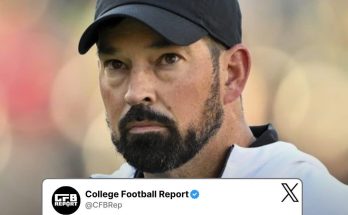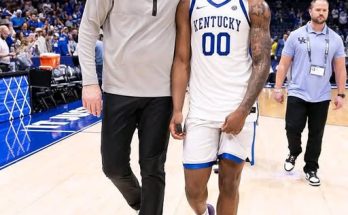The hockey world has been shaken by startling news coming out of New York as reports confirm that Artemi Panarin, the New York Rangers’ offensive maestro and one of the NHL’s most electrifying wingers, has suffered an apparent physical deformity resulting from an off-ice incident. This isn’t just another player injury or routine hockey update. It has the makings of a career-altering event, one that forces us to look beyond the game and delve into the broader implications such occurrences have on athlete health, safety protocols, and the unpredictable nature of off-ice risk factors.
As the details of the incident begin to surface, fans, analysts, and team officials are grappling with the sheer gravity of the situation. According to close sources tied to the Rangers organization, Panarin was involved in an off-ice situation—described as a freak accident—that led to what medical personnel are calling an “apparent structural deformity,” the specifics of which have not yet been fully disclosed. What is known, however, is that this isn’t your ordinary sprain or fracture that can be resolved with a few weeks of physical therapy. The use of the word “deformity” by those close to the matter has alarmed even the most optimistic observers.
Artemi Panarin is more than just a star forward for the Rangers. Since arriving in New York in 2019 after signing a massive seven-year, \$81.5 million contract, Panarin has been the franchise’s offensive heartbeat. With his silky hands, ice vision, and pinpoint playmaking, he has rejuvenated Madison Square Garden crowds and elevated the Rangers back into perennial playoff contention. Losing a player of his caliber for any stretch of time is significant; losing him potentially long-term due to a non-hockey-related incident is almost unfathomable.
What adds a layer of complexity to this incident is the silence surrounding the specifics. Early rumors suggest the accident did not involve any vehicle, altercation, or substance, which often dominate headlines in these types of stories. Instead, the incident reportedly occurred in a private setting, either at Panarin’s home or at a social event with close associates. Whatever the actual circumstances, the fact that medical experts are reluctant to discuss the deformity’s precise nature indicates that this may be as psychologically jarring for Panarin as it is physically painful.
Injury-related deformities in professional sports are rare, particularly those that occur away from the field or ice. When they do happen, they often present existential questions not just for the athlete’s career, but for their identity. These individuals aren’t just competitors; they’ve spent the majority of their lives building their skills, routines, and futures around their bodies being in peak condition. A sudden, shocking alteration—particularly a deformity—can usher in a tumult of emotional consequences. It’s not just about rehabilitation; it’s about the fear that they may never again be the same.
Athletes in Panarin’s position typically undergo rigorous assessments, both physical and mental, following such traumatic events. The Rangers medical staff, alongside league-affiliated specialists, will likely be working around the clock not only to assess the damage but to form an exhaustive rehabilitation plan. This may involve surgical intervention, orthopedic reconstruction, and long-term physical therapy. Moreover, Panarin’s psychological wellness will be closely monitored. Mental health resources in professional sports have expanded in recent years, and incidents of this magnitude call for full-spectrum care.
This latest episode also brings attention to the broader risks professional athletes face when they are off the clock. Contrary to public perception, danger doesn’t always lurk in the high-impact collisions of gameplay or in contentious matchups. Sometimes, injuries and trauma arise from mundane environments. There have been previous instances in the world of sports where players suffered career-threatening conditions from simple accidents—like tripping down stairs, slipping in the shower, or being struck by falling objects. These are not just statistical anomalies. They are reminders that athletes, regardless of their elite physical status, remain vulnerable to life’s random hazards.
The Rangers organization, from top to bottom, is surely in crisis management mode. The NHL offseason is typically a period of strategic recalibration—where general managers map out trades, draft picks, and free agency strategies to strengthen their rosters. For the Rangers, those plans have likely been upended. Panarin is a foundational piece of the team’s strategy. His absence, even if temporary, will require adjustments in line combinations, power-play setups, and potentially even force the front office into pursuing unexpected transactions.
Moreover, this incident could have ripple effects on locker room morale. Panarin is known not just for his offensive brilliance, but for his leadership and affable personality. His presence is a glue that binds the team’s chemistry together. Players feed off his energy, his confidence, and his clutch performances. Without him, the onus will shift to younger players and other veterans to fill the void—on the scoreboard and in the locker room. That type of sudden shift can derail even the most well-constructed team culture.
There’s also the financial element to consider. Panarin is one of the highest-paid players on the team and in the league. Should the deformity result in long-term inactivity or affect his playing ability, the Rangers may find themselves looking into injury protection clauses or even long-term injured reserve (LTIR) scenarios. While such mechanisms exist to provide cap relief, no amount of cap space can truly replace a player of Panarin’s talent and influence.
The NHL Players’ Association (NHLPA) will likely be closely involved as well, ensuring that Panarin’s rights, health, and contract status are being handled properly. In situations where the cause of injury is outside team facilities or not directly tied to hockey, legal considerations and insurance stipulations can become complex. If, for example, negligence or liability is found in relation to a third party or location, legal proceedings may follow. This would add another layer of turmoil to an already tense situation.
While the hockey community prays for positive updates, it’s also crucial to see this moment as a learning opportunity. Safety awareness for athletes must extend beyond traditional training and competition venues. Teams may begin re-emphasizing off-ice safety protocols during the offseason. Whether it’s through seminars, digital monitoring, or enhanced wellness checks, organizations will want to avoid similar scenarios going forward. As more athletes train at private facilities or spend time abroad during the offseason, this becomes even more imperative.
There is also a role for the media to play—one grounded in responsible reporting. In a world of viral rumors and click-driven journalism, it’s easy for speculation to overshadow truth. The media must balance its role as informer with its ethical responsibility to avoid sensationalism, especially in a situation that clearly involves a player’s well-being. Misinformation could exacerbate the mental toll on Panarin and his loved ones.
In a time where sports figures are increasingly recognized as whole human beings rather than mere performers, this incident emphasizes the fragility of their existence. Even with the best medical care and elite conditioning, an unexpected twist of fate can change everything. That reality should inspire greater empathy and support from fans, sponsors, and league officials.
For now, the most important thing is Artemi Panarin’s recovery—not just for the sake of the Rangers or the NHL, but for the man himself. He has brought joy to fans around the world, showcasing artistry on the ice that few can replicate. His health and healing—physically and emotionally—should be the priority. Hockey will continue, games will be played, and teams will adjust. But Panarin’s journey back, whatever form it takes, will be a story of resilience that the entire sports world should rally behind.
The coming weeks will be pivotal. The Rangers are expected to release a formal medical update pending further examination results. Until then, the hockey community waits with bated breath, holding onto hope that this apparent deformity is not a career-ending turn, but a painful chapter in what remains a brilliant career. Whatever lies ahead, Artemi Panarin’s legacy as one of the league’s most gifted forwards is already secure. But now, his story becomes about something greater than goals and assists. It becomes about recovery, identity, and the unpredictable journey of being human in the spotlight of professional sports.



